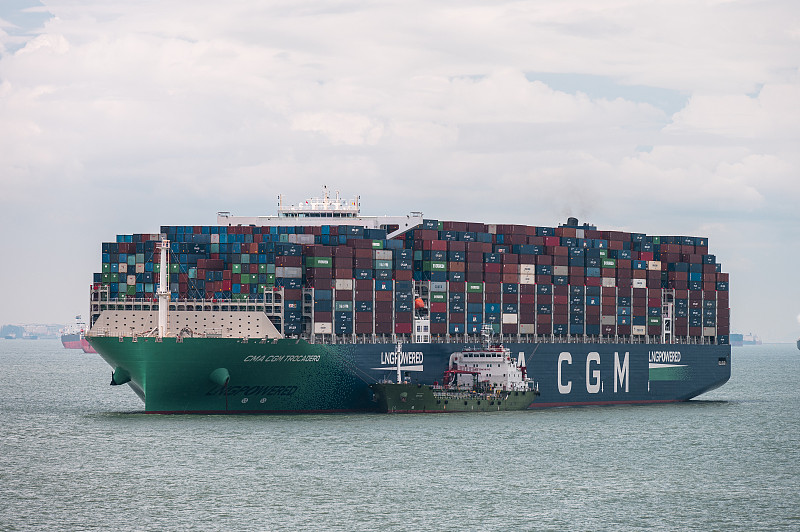
The trade corridor between China and Indonesia is booming, fueled by Indonesia’s strategic position in Southeast Asia and its growing role as a manufacturing and export hub. In 2023, bilateral trade surpassed $136 billion, driven by demand for electronics, machinery, palm oil, and textiles. For businesses, seamless logistics between these two giants is critical—but Indonesia’s complex geography, regulatory landscape, and infrastructure challenges demand a specialized approach. This article explores proven strategies, emerging trends, and actionable insights to optimize China-to-Indonesia freight forwarding while avoiding costly pitfalls.
- The Rising Demand for China-Indonesia Logistics Solutions
Indonesia’s economy, the largest in Southeast Asia, imports over 60% of its industrial raw materials from China, including steel, chemicals, and electronic components. Key drivers include:
- Infrastructure Development: Mega-projects like the Jakarta-Bandung High-Speed Railway and New Yogyakarta International Airport rely on Chinese machinery and equipment.
- E-Commerce Growth: Indonesia’s $70 billion e-commerce market (2024 estimate) fuels demand for fast, reliable cross-border shipping of consumer goods.
- Regional Trade Agreements: Indonesia’s participation in the ASEAN-China Free Trade Area (ACFTA) eliminates tariffs on 90% of goods, incentivizing imports.
Why Partner with a Specialized Freight Forwarder?
- Regulatory Mastery: Navigating Indonesia’s stringent customs requirements, including AEO (Authorized Economic Operator) certifications and BPOM (Food and Drug Monitoring Agency) approvals for certain goods.
- Infrastructure Adaptability: Overcoming challenges like fragmented island logistics, congested ports, and limited rail connectivity.
- Cost Efficiency: Leveraging economies of scale through optimized shipping routes and multimodal solutions.
- Key Services for China-to-Indonesia Shipments
A trusted freight forwarder offers tailored solutions to match diverse business needs: Ocean Freight: The Backbone of Indonesia Trade
- Major Trade Lanes:
- Shanghai to Tanjung Priok (Jakarta): 7–10 days via mainline vessels; ideal for bulk shipments.
- Xiamen to Surabaya: 9–12 days with feeder services; suits medium-sized consignments.
- Freight Consolidation: Reduce costs with LCL (Less than Container Load) options for smaller volumes, avoiding FCL (Full Container Load) minimum charges.
- Port Congestion Alerts: Monitor real-time data on Tanjung Priok’s frequent delays and reroute via secondary ports like Tanjung Perak (Surabaya). Air Freight: Speed Meets Precision
- Priority Routes:
- Guangzhou Baiyun to Soekarno-Hatta (Jakarta): 2–3 days for high-value electronics or perishables.
- Shenzhen to Bali’s Ngurah Rai: Fast-track tourism-related cargo, including luxury goods and equipment. Multimodal Solutions: Bridging the Archipelago
- Sea-Rail Intermodal: Combine ocean freight to Tanjung Priok with rail services to Java’s industrial hubs (e.g., Semarang, Surabaya).
- Cross-Border Trucking: Seamless land transport from Malaysian or Singaporean ports to Indonesian destinations via the Malaysia-Indonesia border (e.g., Port Klang to Dumai).
- Overcoming Common Challenges in Indonesia Trade
Customs Clearance Complexity
Indonesia’s BPOM and DJKP (Directorate General of Customs and Excise) require meticulous documentation, including:
- Certificates of Origin: Verify eligibility for ACFTA tariff reductions.
- Phytosanitary Certificates: Mandatory for agricultural imports like palm oil byproducts.
- Pre-emptive Measures: Use AI-driven documentation tools to avoid delays—incorrect HS codes account for 18% of Indonesia’s customs rejections. Infrastructure Bottlenecks
- Port Limitations: Tanjung Priok handles 65% of Indonesia’s seaborne trade but faces chronic congestion. Mitigate risks by splitting shipments between Tanjung Perak and Belawan (Medan).
- Last-Mile Delivery: Partner with local distributors or 3PLs for efficient inland distribution to Jakarta, Bandung, or Makassar. Compliance with Local Regulations
- Import Restrictions: Certain items (e.g., chemicals, used machinery) require prior approval from BKPM (Indonesia Investment Coordinating Board).
- Tax Compliance: Leverage Free Trade Agreements (FTAs) like AKFTA to minimize import duties through certified AEO status.
- Future Trends Shaping China-Indonesia Logistics
- Digitalization: Indonesia’s Customs Go Live portal mandates electronic submissions by 2025—adopt TMS (Transportation Management Systems) with API integration for seamless compliance.
- Sustainability Initiatives: Eco-friendly packaging and carbon-neutral shipping options are gaining traction as Indonesian millennials prioritize ESG (Environmental, Social, Governance) criteria.
- Port Modernization: Investments in Palu Port (Central Sulawesi) and Bitung Port (North Sulawesi) aim to decongest Jakarta and reduce regional logistics disparities.
- How to Choose the Right Freight Forwarder
When selecting a partner for China-to-Indonesia logistics, prioritize: - Local Expertise: In-country teams to handle BPOM inspections, AEO certifications, and regional duty negotiations.
- Technology Integration: Real-time tracking, predictive analytics for port delays, and automated customs documentation.
- Network Reach: Partnerships with local logistics providers in Jakarta, Surabaya, and Medan to ensure end-to-end visibility.
Conclusion
Thriving in the China-Indonesia trade corridor requires a blend of regulatory acumen, technological agility, and deep local knowledge. By partnering with a freight forwarder that combines AI-driven tools, multimodal expertise, and compliance mastery, businesses can reduce costs by 20–30%, accelerate delivery times, and mitigate risks in this dynamic market.
Optimize Your Cross-Border Strategy Today
Ready to streamline your China-to-Indonesia logistics? Contact our team to design tailored solutions that align with your goals—turning logistical complexity into a competitive advantage.






